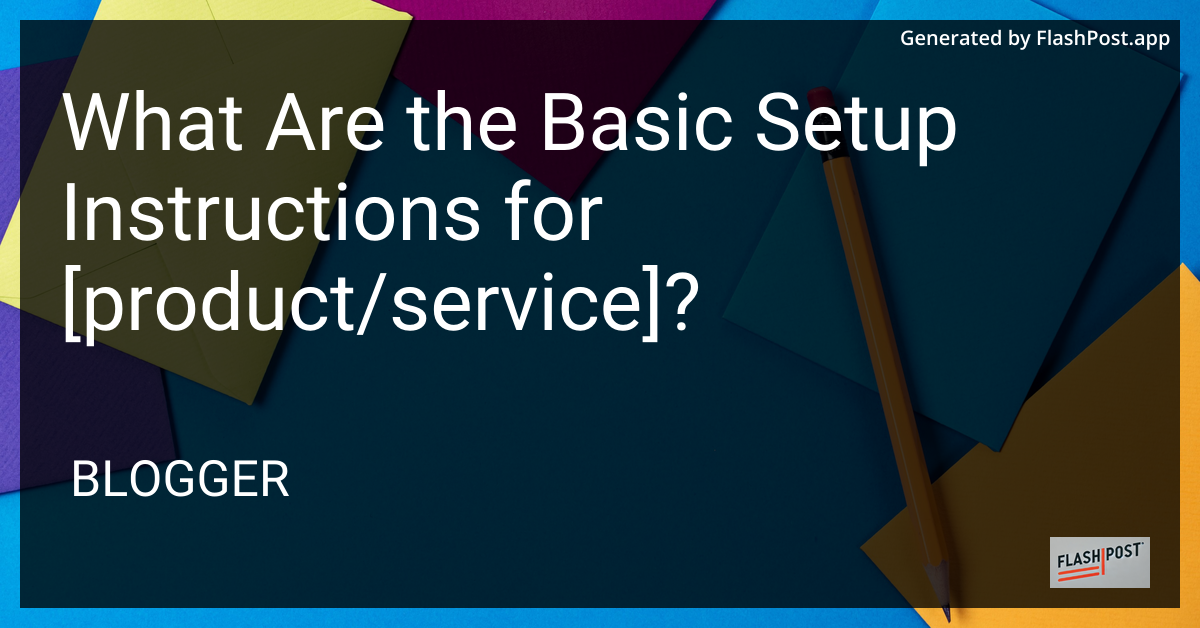What Are the Basic Setup Instructions for [product/service]?

Basic Setup Instructions for [Product/Service]
Setting up a [product/service] can seem daunting, but with the right instructions, you can have everything up and running smoothly in no time. Whether you are a tech newbie or an experienced user, this guide will walk you through the essential setup steps to ensure optimal performance and usability.
1. Unboxing and Initial Inspection
Before diving into the setup process, it’s crucial to start with unboxing and a thorough inspection:
- Check for Damage: Inspect the [product/service] and its packaging for any signs of damage during transit.
- Verify Contents: Ensure all specified components, accessories, and manuals are included in the box.
2. Powering Up
Once you have confirmed that everything is in order, proceed with powering up the device:
- Connect the Power Source: Follow the instructions in the manual to connect the [product/service] to a power source.
- Power On: Turn on the device using the designated power button.
3. Connecting to Wi-Fi
Ensure your [product/service] enjoys all its online features by connecting it to your Wi-Fi network:
- Access Settings: Go to the network settings of the [product/service].
- Select Your Network: Choose your home Wi-Fi network from the list of available networks.
- Enter Password: Input the Wi-Fi password when prompted to establish a secure connection.
For detailed Wi-Fi connection instructions, you can refer to this setup guide.
4. Software Installation
Most devices require software or app installation for enhanced functionality:
- Download the App/Software: Visit the official website or app store to download the necessary software.
- Installation: Follow the on-screen instructions to install the software on your device.
Setting up software for specific databases? Check out how to setup a SQL adapter for Oracle Database.
5. Initial Configuration
With power and software in place, configure the [product/service] settings:
- Device Settings: Customize settings such as language and region.
- Privacy Settings: Adjust privacy options to protect your data.
For users needing guidance with Linux systems, explore the instructions on how to install Eclipse on Linux.
6. Testing and Calibration
After configuration, perform a test run to ensure everything functions as expected:
- Run Diagnostics: Utilize any built-in diagnostic tools to check the system’s functionality.
- Calibrate as Needed: If your device requires calibration, follow the manual instructions.
For devices like robot lawn mowers, consider how to set up boundary wires.
7. Troubleshooting Common Issues
In the event of setup challenges, consult the troubleshooting section in the user manual or online forums:
- Setup instructions for electronic devices.
- Check community forums or support for device-specific advice.
Conclusion
Congratulations! You’ve successfully set up your [product/service]. This guide covers the essential steps to get your device ready for use. For ongoing optimization and advanced settings, refer to in-depth resources or reach out to customer support if you encounter any challenges.
Ensure your product continues to perform optimally by keeping up with any available software updates and periodic maintenance. “`
This article is intended to guide users through the basic setup processes, enhanced with strategic SEO elements and internal and external links for additional resources.
Comments
Post a Comment